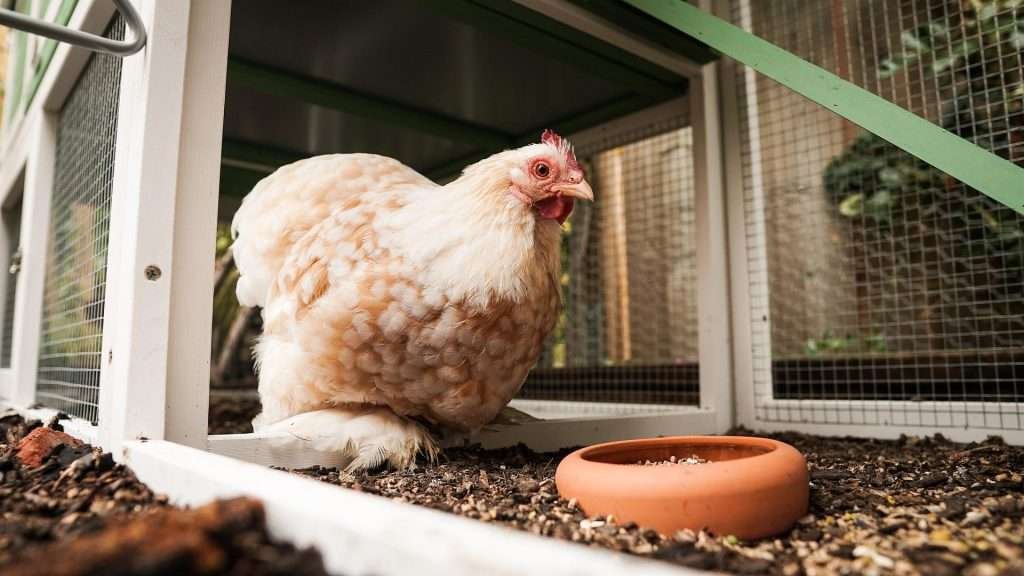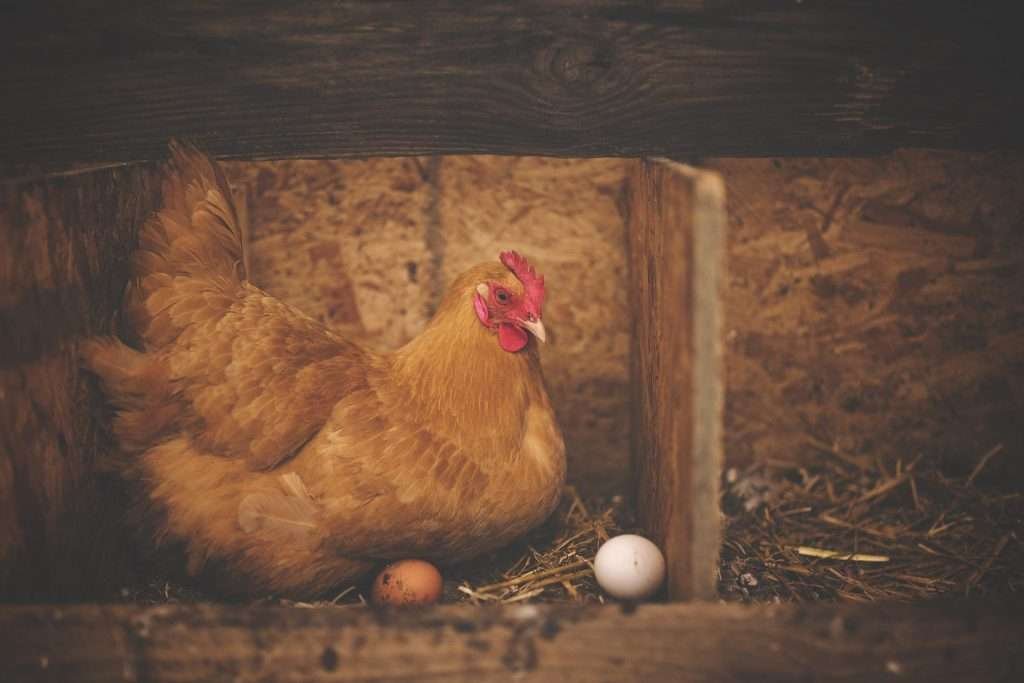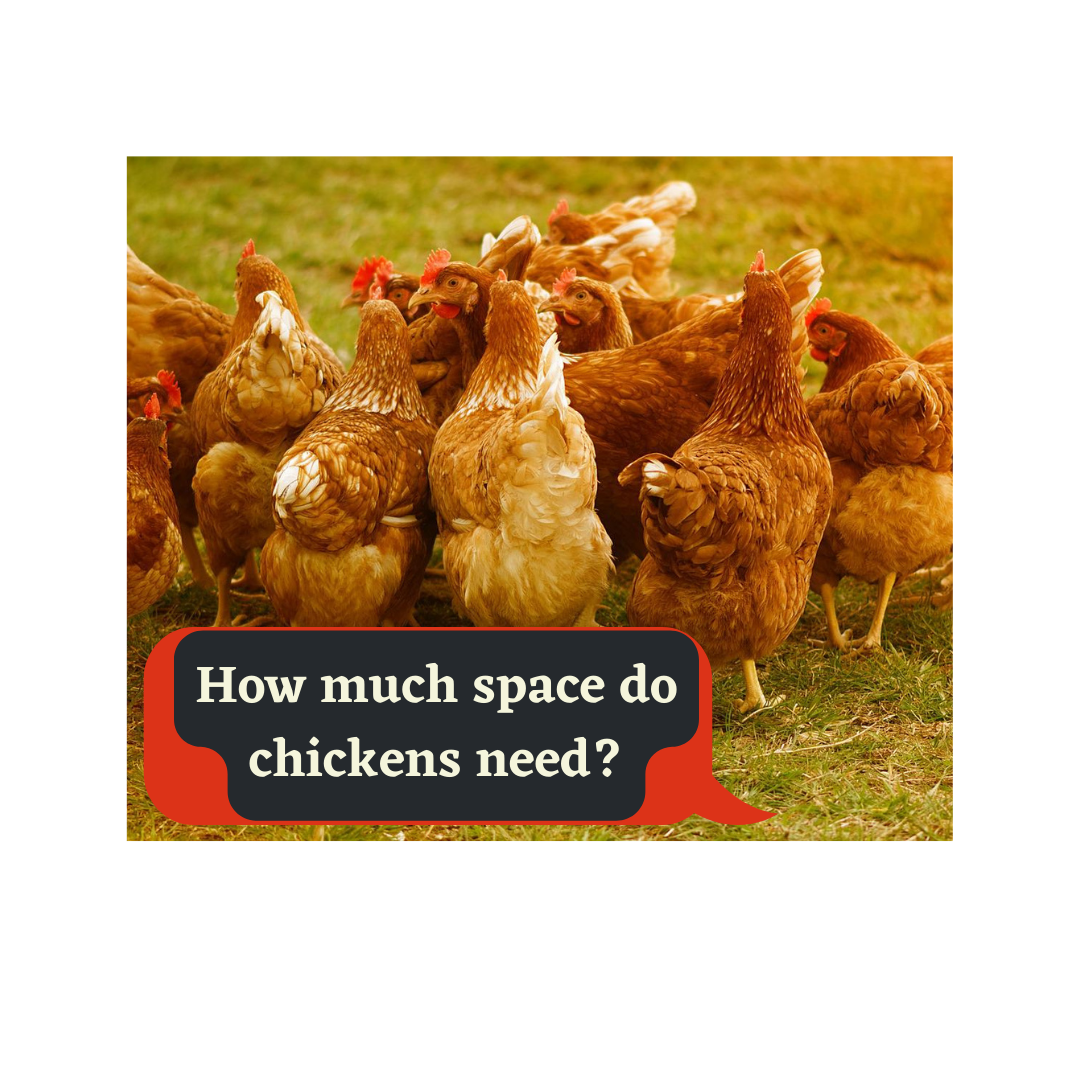Have you have considered keeping chickens but have asked yourself ‘”how much space do chickens need?” If so, we have done all the research for you – so read on to find out!

For some people, when they imagine keeping chickens they visualize rolling green pastures with lots of land available for their chickens to roam.
Fortunately, loads of green pasture and land are not required for keeping chickens. Of course this also depends on the amount of chickens you are planning to keep. If you are wanting a flock of thousands for commercial purposes then a lot of space will indeed be required!
For most people though, they are just wanting chickens for backyard pets or for their personal egg supply, not for commercial purposes.
If you have considered keeping chickens but have asked yourself ‘how much space do chickens need?’ read on to find out exactly what is required.
What this article covers
This is a long article, so below are some quick links. Click any of them to go straight to that section – or just carry on reading for the full article.
How Much Space Do Chickens Need? Do I need a large property?
What Size Chicken Coop Should I Have?
How Much Space Do Chickens Need For Roaming and Free-Ranging?
How Much Space Do Chickens Need? Do I need a large property?
The simple answer is no you don’t.
Let’s say you are getting chickens for backyard pets or for your family egg supply.
We are going to work off a number of keeping four chickens as a beginners guide.
In short, keeping four chickens would need 16 square feet of space inside a coop and a chicken run of at least 40 square feet. That equates to 4 square feet per chicken in the coop and 10 square feet per chicken for the run.
So provided you have the minimum space per chicken as referenced above to fit a coop and run, you can keep chickens in a small backyard. That said, it is also important to check with your local regulations to ensure your property meets space requirements for keeping poultry.
We do also recommend giving you chickens as much room as possible to give them maximum comfort and happiness and will explain this further in the article.

What Size Chicken Coop Should I Have?
If using our example of four chickens, a coop will need to be at least 16 square feet. Remember – four square feet per chicken.
The coop, not including the run, is the chicken’s housing – it provides them with shelter from the weather and a place to nest, perch or roost.
It is a good idea to have a minimum of 10 inches of perching space per chicken. For four chickens that means 40 inches for a perch/roost pole.
Chickens like to perch close together on the pole to keep each other warm during the night.
Heat generation is also a factor with choosing a coop.
It is not generally better to get a bigger coop than needed because your flock may otherwise struggle to warm up the coop using their body heat if the coop is too large.

And What About a Nesting Box?
One foot cubed of space per chicken is required for a nesting box. So for a flock of four that would mean a nesting box of one foot in depth and four feet long.
A nesting box is where the chickens lay their eggs and it fits on the side of the coop.
You can choose to have one large ‘open-plan’ nesting box or separate individual nesting boxes.
Some people prefer individual nesting boxes for their chickens but others go with an open nesting box. This is going to depend on your budget and personal preference.

How Much Space Do Chickens Need For Roaming and Free-Ranging?
First let’s touch on generally roaming and movement outside of the coop.
Chickens require at least 15 square feet each for roaming space. This is just a minimum amount of space per chicken and doesn’t equate to much space at all. Like all living beings, the more room to move and explore, the happier your chickens will be.
You may allow your chickens to roam freely in the backyard, within a portable run (chicken tractor) or within a fixed run.
If you choose a run – go for the portable option so the chickens can work the whole area of the yard and allow even wear if you have grass as the base layer of your backyard. It also prevents the ground becoming a mud pit and your chickens getting absolutely filthy.
Now, let’s talk about true free-ranging and what that means.
We can look at legal definitions.
In the United States, the Department of Agriculture defines free-range as a chicken having “access to the outside” but does not specify how often they should be outside and how much space they require outside.
In the European Union, the requirements are most defined and specify that the chickens must have continuous daytime access to an open air run mainly covered in vegetation with no more than 1,000 birds per hectare of space.

Why You Should Give Chickens As Much Space As Possible
Put simply, cramped spaces lead to unhealthy chickens.
Cramped spaces are prone to attract mold, mildew, and bacteria and cause upper respiratory infections in your flock.
Cramped spaces also lead to an increase of mites and lice being passed between chickens.
Cramped spaces can also lead to more hen pecking and bullying behavior amongst the flock.
Treat your chickens like any other adored pet you would keep by giving them as much space as possible to stretch their wings and maintain their wellbeing.
If you’re finding your flock are unhealthy and prone to disease and parasites, hen-pecking each other and do not seem content. Then it’s time to think about expanding your space or downsizing your flock.
We have put together a shopping list below to help ensure your chickens are kept in an optimal health condition. Check out our list here:
- Chicken coop
- Wood shavings bale
- Feeder
- Waterer
- Perch
- Nesting Box
- Layer pellets
- Chicken scratch/grain
- Shell grit
- Chicken Safe Disinfectant
- Coop cleaner
- Chicken dust
- Wormer
- Multivitamin
- Calcium supplement
- Insecticide
- Mealworms
Chicken Care Shopping List
Are you looking for a shopping list of everything you need when caring for your precious flock? We have put together an easy reference of items for your convenience.

